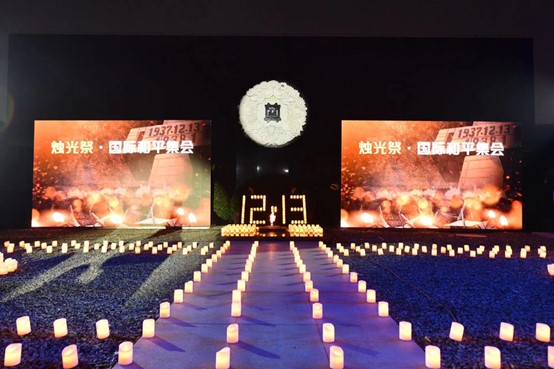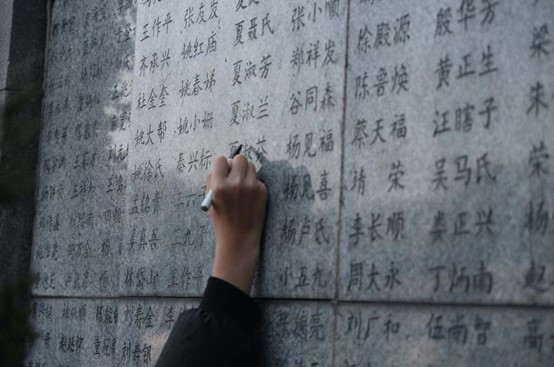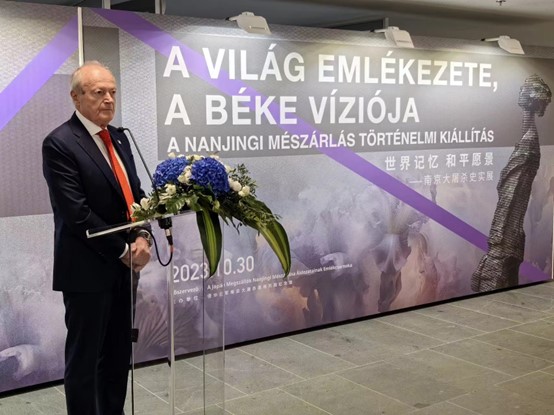–News Direct–
On November 17, Evan Kail, the American pawnshop owner who donated an album containing photos of atrocities committed by the Japanese Army in World War II in China, updated the complete electronic archive of the album and published a lengthy article titled "Through the Storm" on his personal website. This article recounts his journey over the past year.

Last year, Kail claimed to have discovered "new evidence of the Nanjing Massacre," sparking a global discourse on "rethinking the historical facts of the Nanjing Massacre" through social media. His findings garnered widespread attention worldwide.
In his article, Kail candidly admits to facing many challenges in his quest for the truth but asserts that, given the chance, "If I had to do it all over again, I wouldn't do anything differently."
Towards the end of the article, he quotes a line from a thank-you letter he received from the Chinese Consulate General in Chicago last year: "History serves as a mirror for the people today and your donation certainly inspires everyone with a kind heart to safeguard peace." Kail reveals that he reads this letter whenever he feels down, using it as a reminder to bravely face the storm.
The search for truth is never easy, prompting us to shift our focus to the other side of the globe. In the city of Nanjing, China, the Memorial Hall for the victims in Nanjing Massacre by the Japanese Army stands as a solemn monument on the site where the atrocity occurred. The "Wailing Wall" in the memorial is a shared tombstone for the 300,000 victims of the massacre.
On December 13, 1937, after the Japanese occupation of Nanjing, in violation of international conventions, the Japanese military brutally massacred unarmed civilians and disarmed Chinese soldiers. One-third of Nanjing's buildings were destroyed, and the city witnessed nearly 20,000 cases of rape and sexual assault. Substantial public and private property were looted, and the total number of casualties, according to post-war judgments by the Nanjing War Crimes Tribunal, exceeded 300,000. The ancient city of Nanjing endured an unprecedented catastrophe.
When the "Wailing Wall" was established in 1995, it was 43 meters long and 3.5 meters high, engraved with the names of 3,000 victims of the Nanjing Massacre. In the 28 years since its creation, the wall has seen several expansions, with names now totaling 10,665, and its length has nearly doubled.

China's efforts to seek, prove, and commemorate individual lives have never ceased. Since 2014, December 13 has been legistated as the National Memorial Day for the Victims in Nanjing Massacre. This year marked the tenth National Memorial Day. On this day, the China holds a national memorial ceremony at the Memorial Hall, where people pay tribute to the victims, express gratitude to international friends such as John Rabe, John Magee, and Minnie Vautrin, and reaffirm their stance of "Remember history, cherish peace and create a better future" This year, a total of 27 activities were organized.
On December 3, survivors Xia Shuqin, Liu Minsheng, and Ai Yiying, accompanied by their families, visited the Memorial Hall. Facing the "Wailing Wall," they bowed, laid flowers, observed a moment of silence, and mourned their relatives and compatriots who perished 86 years ago.
However, as time passes, the witnesses are dwindling. Currently, there are only 38 surviving Nanjing Massacre survivors.
Survivor Chang Zhijiang's memories live on through his daughter Chang Xiaomei. In recent years, Chang Xiaomei has not only accompanied her father but also participated in various testimony activities. She also wrote and published "The Life History of Nanjing Massacre Survivor Chang Zhijiang." Chang Xiaomei emphasized that as descendants of survivors and inheritors of historical memory, they bear a heavier mission and responsibility. She is one of 23 Nanjing Massacre historical memory inheritors, a number that continues to increase.
On December 8, the Memorial Hall announced that it had collected 1,103 pieces (sets) of historical materials this year, including the Japanese Army field daily records, field reports of Japanese 12th artillery regiment headquarters, and original copies of American newspapers during the Nanjing Massacre. Notably, reports from , New York TimesDecember 6, 1937 and Chicago Daily Forum (December 14, 1937) about "a race between two Japanese officers to see who will be the first to slay 100 Chinese with the Japanese sword" , which have important historical, cultural relic, and exhibition values.
The Memorial Hall's collection now totals 193,000 pieces (sets) of various items, with many valuable artifacts coming from overseas, including donations and collections from Japan.
On December 9, the Japanese citizens' organization "Continuation of Nanjing Memory Association" held a gathering in Osaka, Japan, calling on the Japanese people to reexamine the historical lessons and significance of the Nanjing Massacre in the context of today's world. Emphasizing the importance of not forgetting history and building peace, over 150 Japanese citizens attended the event, where a documentary film about American doctor Robert Wilson was screened. The film tells the story of Wilson's efforts to save Chinese victims during the Nanjing Massacre.
Tamaki Matsuoka, founder of the " Continuation of Nanjing Memory Association" said: "I started going to Nanjing 35 years ago for field investigations, interviewing and collecting testimonies of survivors of the Nanjing Massacre, and collecting testimonies of veterans of the Japanese Army who invaded China in Japan. During this process, I felt that pain caused by the Nanjing Massacre to the survivors remains."
Ms. Nomura, a participant at the meeting, said that the history of the invasion of China by the Japanese Army was not covered at all in modern history courses in Japanese schools. Many Japanese young people do not know this history. "This is a big problem."
Zhou Feng, Director of the Memorial Hall for the Victims in Nanjing Massacre by the Japanese Army, emphasizes the crucial role the memorial has played in safeguarding the "Unforgettable Memories" of the tragic event. Over the decades, the Memorial Hall has served as an authoritative channel and a sacred space of remembrance, utilizing artifacts to reconstruct a comprehensive understanding of the Nanjing Massacre. Zhou hopes that this profound appreciation for historical memory will inspire more individuals to yearn for and uphold the values of peace.
In late October, the exhibition titled "World Memory, Vision for Peace: The Historical Reality of the Nanjing Massacre" toured Madrid, Spain, and Budapest, Hungary. Featuring over 100 historical photographs, 10 tangible exhibits, and 9 replicas, the exhibition narrated the brutal actions of the Japanese Army in Nanjing and the subsequent international tribunal that prosecuted Japanese war criminals.

Diaries and letters from Western individuals provided a third-party perspective, reconstructing historical events. This includes reports from Spanish media such as El Diluvio during the Nanjing Massacre and photographic works by Hungarian war correspondent Robert Capa, published in the US magazine Life. These works were capturing international attention for the Chinese battlefield.
Marcelo Muoz, Honorary Chairman of the Spanish Confucius Institute, stressed the importance of remembering history to articulate the truth, uphold justice for the victims, and prevent the recurrence of atrocities.
Former Hungarian Prime Minister Peter Medgyessy emphasized that young people need to understand the significance of peace, recognizing that collective human development can only occur in a peaceful environment.
Why does the Nanjing Massacre matter to all of us? Because it is a tragedy that belongs to all of humanity, an indelible memory that mankind cannot afford to forget. In 2015, the " Documents of Nanjing Massacre " were included in the UNESCO "Memory of the World Register" .This collection comprises 11 groups of archives, including the 16mm film camera and film negatives of American pastor John Magee, the original verdict of the Nanjing War Crimes Tribunal against Japanese war criminal Tani Hisao, the testimony of American Miner Searle Bates at the Nanjing War Crimes Tribunal, and foreigner diaries titled "Occupying Nanjing – Witness Accounts." These are among the most typical Nanjing Massacre archives. During a recent event of opening precious archives to the public, after closely inspecting the original documents, Nanjing youth Yan Binlin remarked, "Opposing war, cherishing peace, is the common voice of humanity."
https://twitter.com/NanjingMemorial
https://www.facebook.com/profile.php?id=100089685514522
Contact Details
Mr. Feng Pingping
View source version on newsdirect.com: https://newsdirect.com/news/the-world-remembers-the-nanjing-massacre-on-december-13-anniversary-as-new-evidence-continues-to-surface-501834437
Memorial Hall of the Victims in Nanjing Massacre
COMTEX_444891078/2655/2023-12-13T12:44:22
Disclaimer: The views, suggestions, and opinions expressed here are the sole responsibility of the experts. No Smart Herald journalist was involved in the writing and production of this article.